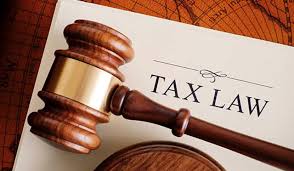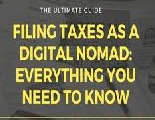
Taxation Law
Description
Research Assignment Guidelines (see also subject outline for further information ) Please note: -As this is a research assignment, students are expected to go beyond the course materials and to conduct independent research in order to answer the assignment question.
-The content in the lecture topics listed in weeks 1 to 8 (see program on page 3 of the subject outline) will also provide useful guidance in relation to the assignment
. -Students are not required to address possible issues in relation to the lecture topics listed in weeks 9-12 of the subject outline (except to the extent that there is any overlap with lecture topics in weeks 1 to 8).
-Students are required to follow HIRAC to address the key issues arising from the facts eg, “Is the [$x] expense incurred, deductible to Sarah under s8-1, ITAA97?”, “Is the [$y] amount/benefit received, included in Sarah’s assessable income?” etc
-Students should identify the relevant key cases, legislation, tax rulings and principles of tax law, in relation to each key issue.
-Students should also include any relevant calculations of the assessable or deductible amount regarding each particular key issue, however students are not required to calculate the overall income tax payable by the taxpayer for the income year.
-Students may assume, as per the facts, that Sarah is an Australian resident for tax purposes. Accordingly, there is no need to discuss tax residency.
Structure/format -Make sure you follow the HIRAC methodology (see “Concise Guide to Answering Tax Law Problem Questions” and “Example illustrating HIRAC methodology” on UTS Online) -Use separate headings for each relevant key issue eg, “Is the [$x] expense incurred, deductible to Sarah under s8-1, ITAA97? -Maximum word limit is 1500 words (excluding references), students must not deviate from the word limit by more than 10% -Use at least 11 point font size (use one consistent font – Arial 11 or Times New Roman 12) Referencing -Make sure you include case citations for any cases referred to in your response eg, Brent v FCT (1971) 125 CLR 418 Case citations may be found easily in the Prescribed Textbook (see Table of Cases at the back of the textbook) or on the Lexis Advance Pacific database which can be accessed via the UTS Library website -Make sure you refer to any relevant specific sections of legislation for each key issue eg, s6-5, Income Tax Assessment Act 1997 (Cth) -Referencing style should be consistent throughout the response. For this assignment, students may use either: AGLC (see links below): http://www.lib.uts.edu.au/help/referencing/aglc-guide
https://law.unimelb.edu.au/mulr/aglc/about
or alternatively UTS Harvard referencing (see http://www.lib.uts.edu.au/help/referencing/harvarduts-referencing-guide )
Taxation Law: Research Assignment (40%) Word limit: 1500 words maximum (excluding references) Due Date: The assignment must be submitted both in hard copy to Law Reception (Level 3, CB05 B) and online via UTS Online by 5 pm on Tuesday 5 February 2019. Facts: Sarah is a full-time interior design consultant employed by a large interior design firm Design Co Ltd. She is an Australian resident for tax purposes. Sarah’s main duties are to provide advice to clients, and to develop functional and aesthetically enhancing designs for the interior of buildings. Design Co Ltd pays Sarah a salary of $80,000 per year. Design Co Ltd provides Sarah with a laptop computer to use for her work, however does not provide Sarah with an office. She lives in Strathfield where she uses a spare room at home as her home office which is the base of her consulting operations, where she prepares advice and designs for clients. The home office takes up about 20% of the floor area of the house. She spends 60% of her time in the home office on design work and 40% of her time in the home office chatting on the phone with her friends. During the 2017/18 year, Sarah incurs expenses of $30,000 for interest on her home loan, $3,000 for insurance and $7,000 for lighting and electricity for the entire house. On 1 August 2017, Sarah paid $9,000 (GST exclusive) for a new piece of design equipment for her home office. The design equipment has an effective life of nine (9) years. From 1 August 2017, Sarah uses the equipment 60% for preparing designs for clients, and 40% for designing a new kitchen for herself, which she plans to build in the future. For the 2017/18 year of income, she pays $700 membership fees for her membership of the Interior Designers Association of Australia, and $500 for subscriptions to Interior Design journals. Sarah is occasionally required to travel to client premises to provide on-site advice and inspect the interior of buildings and afterwards she travels directly home from the client’s offices. During the 2017/18 year of income, she incurs travel expenses of $4,000 in travelling from home to client premises and back home again. She is required, by her employer, to wear “all black” clothing when meeting with clients. During the 2017/18 year of income, she spends $700 on “all black” skirts, trousers, and tops to wear to client meetings. Sarah is very hardworking and in addition to her full-time job, she also teaches art classes at a community college in Newtown during the week, in the evenings. She travels from home to the college in Newtown to teach, and afterwards she travels directly home from the college. During the 2017/18 year of income, she incurs travel expenses of $5,000 in travelling from home to the college in Newtown and back home again. She receives $25,000 from teaching at the college during the 2017/18 income year. In July 2017, Sarah also commenced a Master of Business Administration (MBA) degree at university, as she hopes to move into a management role (and away from an interior design role) in the future. During the 2017/18 year of income, she incurred $6,000 for course fees and $700 for textbooks. In January 2018, while exploring the new year sales, Sarah came across a good bargain and purchased a 120-year old, antique bedroom furniture set (comprising a bed, 2 bedside tables and a chest of drawers) for $1,550 ($450 for the bed, $350 for each bedside table, and $400 for the chest of drawers). She negotiated with the vendor to buy each piece of the set separately. A few weeks later she received an offer of $4,400 for the set. She negotiated with the purchaser to sell each item separately ($2,000 for the bed, $700 for each bedside table, and $1,000 for the chest of drawers). Required: Advise Sarah regarding the tax implications to her, arising from the above facts, in relation to the 2017/18 year of income. In your answer, make sure you consider the potential assessability for income tax purposes to Sarah of any of the above events, and the availability of a tax deduction for any expenses incurred. Also make sure that you apply the HIRAC methodology and refer to any relevant cases, legislative provisions, tax rulings and principles of tax law. (40 marks)
We can write this or a similar paper for you! Simply fill the order form!






